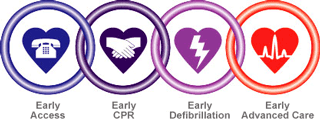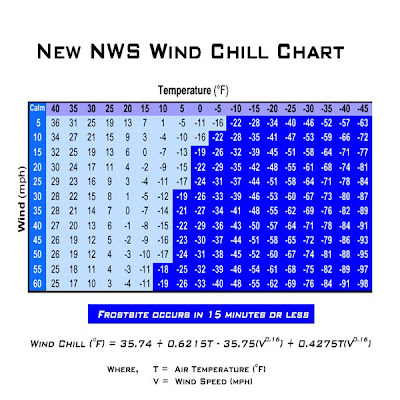To prevent the unique complications reported here, regular checking of proper position of the chest band during resuscitation is advised.[1]
This translates as – the liver bone ain’t connected to the heart bone.
The rescuer should compress in the center of the chest at the nipple line.[2]
Perhaps the device was applied while the patient was seated and the patient has large enough breasts, that the nipple line ended up somewhere in the neighborhood of the navel.
On their arrival, the initial rhythm was asystole and she was found gasping. Advanced cardiac life support was started immediately, but asystole remained despite high doses of epinephrine, atropine, and adequate cardiopulmonary resuscitation(CPR).[1]
They continued to resuscitate this patient beyond what is appropriate. But that is just the beginning.
Forty-five minutes after start of resuscitation, she arrived at the emergency department. Echocardiography confirmed cardiac standstill and a dilated right ventricle without other abnormalities. A massive pulmonary embolism was suspected and intravenous tenecteplase (8000IU) was administered as a bolus, after which chest compression was continued, using a mechanical CPR device (AutoPulse)[1]. Because asystole persisted after a total of 105 minutes, resuscitation was stopped and our patient died.[1]
I know what you are thinking – they used the word died, so I should be happy. Not exactly. While it is nice that they did not resort to the use of a euphemism for death, they did not accept that the patient was dead until over an hour after she’s not only merely dead, she’s really most sincerely dead. Delaying acknowledgment of death is also a continuation of euphemism by other means. Essentially, this is saying, She’s hanging in there. The reality is that she has long since left the building.
45 minutes of CPR prior to arrival at the ED? Hmmm. What does the AHA (American Heart Association) suggest in this situation?
Defibrillators are required standard equipment on ambulances in most states, so the absence of a “shockable” rhythm on the defibrillator after an adequate trial of CPR can be the key criterion for withdrawing BLS in the absence of timely arrival of ACLS.[3]
Asystole is as much absence of a “shockable” rhythm as you can get. You can cut the heart out of the patient and the rhythm will never become any worse than asystole. Just ask anybody, who is dead. They will not argue with that statement.
Refractory asystole defines stable.
EMS, in this case was able to deliver ACLS (Advanced Cardiac Life Support – almost all of the fancy treatments that have not been shown to improve outcome from cardiac arrest). If this had been an American BLS (Basic Life Support – just CPR and an AED for cardiac arrest) ambulance, then according to AHA, this patient should have been pronounced dead on scene, rather than transported. However, this was an ALS service and they still were required to transport to the hospital. It is true that it is difficult to accept a bad outcome on a 49 year old otherwise healthy patient. That does not mean that continuing past the end of the resuscitation algorithms is the right thing to do medically or ethically.
Because asystole persisted after a total of 105 minutes, resuscitation was stopped and our patient died. No. The patient was dead before transport. Other drivers were endangered in order for the doctors at the hospital to be able to pretend that they are gods. The EMS crew was endangered, too. How is any of this justified? I guess the only good thing is that they did not fly the patient in a helicopter.
If an EMS system does not allow nonphysicians to pronounce death and stop resuscitative efforts, personnel may be forced to transport to the hospital a deceased victim of cardiac arrest who proved to be refractory to proper BLS/ACLS care. Such an action is unethical.[3]
Such an action is unethical.
Not a lot of subtlety, there.
I do not disagree with the AHA on this.
Then they decide that a little bit of logic might be persuasive –
This situation creates the following dilemma: if carefully executed BLS and ACLS treatment protocols fail in the out-of-hospital setting, then how could the same treatment succeed in the emergency department? A number of studies have consistently observed that <1% of patients transported with continuing CPR survive to hospital discharge.[3]
But was there any potentially reversible cause of cardiac arrest that might have benefited from 45 minutes of prehospital CPR as a preparation for The Crusher?
At autopsy, no pulmonary embolus was found, but there were ruptures of liver (Fig.1) and spleen (Fig.2) with 1 L of abdominal blood. Added to bilateral dorsal rib fractures, a fractured manubrium of the sternum, and lateral cutaneous lacerations, this strongly suggested a relation with use of the device; however, a relation with previous manual external chest compressions cannot be excluded.[1]
Usually, I have to drive over a patient to produce that kind of extensive damage.
Microscopy showed recent and prolonged ischemic injury of the myocardium.[1]
But what if it really had been a massive pulmonary embolus?
The patient still would have been long dead before even consideration of transport.
Massive pulmonary embolus is an obstructive cause of cardiac arrest. Anybody who has taken even a beginner biology class should understand that a massive pulmonary embolus prevents circulation, even if some small amount of circulation could be maintained with compressions, it is not adequate to maintain a functioning brain. If blood cannot get through the lungs, then there is no oxygen/carbon dioxide exchange to prevent progressive organ failure, unless some sort of bypass machine is being used. The AutoPulse® does not do bypass.
Think about a clogged toilet. Continuing to compress is similar to continuing to flush, but the problem is the blockage that prevents everything from getting where we want it. At least the clogged toilet has a nice feedback mechanism. The clogged toilet lets you know that things are not working by overflowing. Only the most obtuse individual does not recognize this. With a dead body, the signs that This ain’t workin’ are a bit more subtle.
Obstructions that cannot be cleared quickly, will not respond to prolonged resuscitation attempts.
In this case the AutoPulse® does appear to have done something more than just enable resuscitation to be prolonged. The AutoPulse® appears to have produced extensive tenderizing of the organs in an epinephrine and atropine marinade. Emeril Lagasse might even have Kicked it up a notch! and added a Bam! with each compression.
This patient was not a trauma patient, but these injuries are examples of severe multi-system trauma. I can’t imagine why this patient did not get better.
I have never really seen the need for mechanical compression devices. Maybe for severe hypothermia during rewarming, but that CPR is not supposed to be worse than the hypothermia. This case gives an example of some of the problems with mechanical compression machines.
When people are performing compressions manually, it is a lot easier to notice if there is something wrong.
When people are performing compressions manually, it is a lot easier to notice if the hand placement is a little off. Hands over the liver and/or spleen would be more than a little off, since the hands are supposed to be on the sternum.
When people are performing compressions manually, it is a lot easier to realize that the pool of sweat on the patient is an indication of a ridiculously prolonged, and futile, resuscitation.
Is it more likely that someone will admit the obvious, if there is no machine to make it easier to ignore the obvious?
Footnotes:
^ 1 Extensive injury after use of a mechanical cardiopulmonary resuscitation device.
Wind J, Bekkers SC, van Hooren LJ, van Heurn LW.
Am J Emerg Med. 2009 Oct;27(8):1017.e1-2.
PMID: 19857428 [PubMed – indexed for MEDLINE]
^ 2 AHA ACLS Guidelines – Part 3: Overview of CPR
Circulation. 2005;112 [Suppl I]:IV-12-IV-18;
published online before print November 28 2005,
doi:10.1161/CIRCULATIONAHA.105.166552
Free Full Text . . . . Free Full PDF
^ 3 AHA ACLS Guidelines – Part 3: Overview of CPR
Circulation. 2005;112 [Suppl I]:IV-12-IV-18;
published online before print November 28 2005,
doi:10.1161/CIRCULATIONAHA.105.166552
Free Full Text . . . . Free Full PDF
.

.jpg)



Subscribe to RogueMedic.com